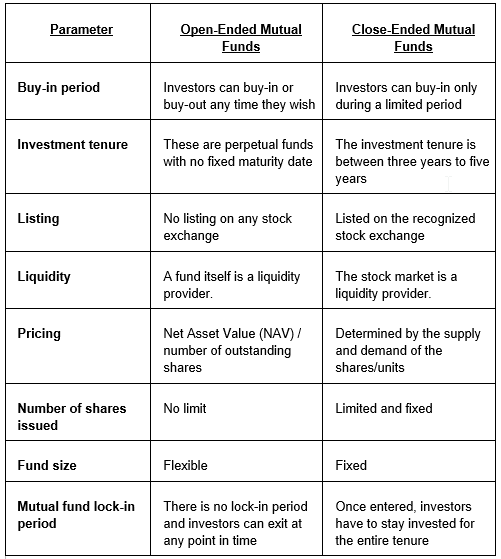do closed end funds have liquidity risk
Costs the expense ratios are competitive with most open end mutual funds but still. 1 day agoThat in a nutshell explains the problem with the structure of closed-end funds like the 32 billion Nuveen CA Quality Muni Income ticker.
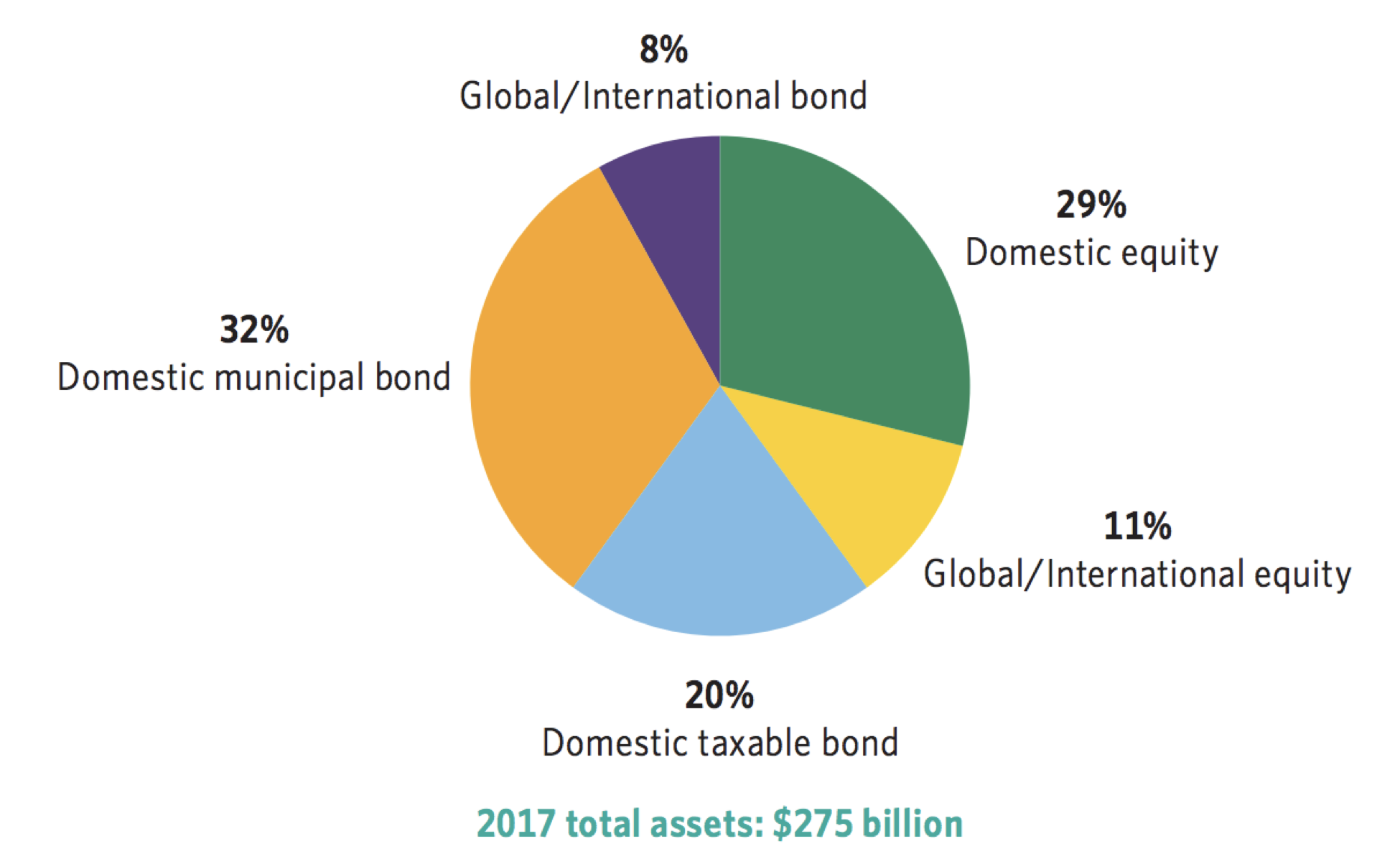
A Guide To Investing In Closed End Funds Cefs Intelligent Income By Simply Safe Dividends
Funds or funds4 or closed-end upon which several of the Acts other provisions depend turns on whether the investment companys shareholders have the right to redeem their shares on demand.
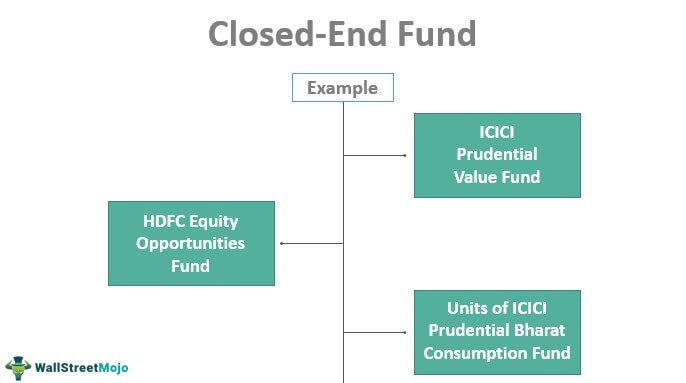
. Rule 22e-4 also requires principal underwriters and depositors of unit investment trusts. Liquidity Risk Although CEFs are listed and traded on an exchange the degree of liquidity or ability to. Their yields range from 632 on average for bond CEFs to.
Closed-end funds CEFs can be one solution with yields averaging 673. Exchange-traded funds ETFs are generally also structured as open-end funds but can be structured as. With a closed-end fund the number of shares is fixed and shares are not redeemable from the fund.
Closed-end funds may trade at a premium to NAV but often trade at a discount. Unlike open-end funds closed-end funds do not need to maintain liquidity to meet daily redemptions. The closing price and net asset value NAV of a funds shares will fluctuate with market conditions.
CEFs are exposed to much of the same risk as other exchange traded products including liquidity risk on the secondary market credit risk concentration. Closed-end funds issue only a set number. A closed-end fund is a type of investment company whose shares are traded on a stock exchange or in the over-the-counter market.
Mutual funds are open-end funds. This can result in. Those shares are first issued through an IPO and then trade on an exchange just like stocks or ETFs.
This makes ETFs much less likely to have. They are retired when an investor sells them back. A closed-end fund legally known as a closed-end investment company is one of three basic types of investment companies The two other types of investment companies are open-end funds usually mutual funds and unit investments trusts UITs.
Active bond funds more likely to target illiquid investments. Like a mutual fund a closed-end fund is a pooled. The use of leverage allows the CEF to maintain a higher distribution yield than open-end mutual funds.
New SEC Rule Requires Open-End Funds to Have Formal Liquidity Risk Management Programs. Just like open-ended funds closed-end funds are subject to market movements and volatility. Look for Discounts and Premiums.
Lets assume that the market price is 18 per share and that NAV is 20. So for instance a CEF that is valued at 10 may. Manzler 2004 shows that the discounts on closed-end funds are driven by both liquidity and liquidity risk differentials between the fund stocks and the stocks in the underlying portfolio.
Unlike open-end funds managers are not allowed to create new shares to meet demand from investors. Some closed-end funds have a managed distribution strategy. If the market price is above NAV say 21 in this case then the closed-end fund sells at a premium of 5.
On the other hand closed end funds have a fixed number of shares. Understand the ETF Liquidity Ecosystem with State Street SPDR. Its assets are actively managed by the funds portfolio managers and may be invested in equities bonds and other securities.
Many closed-end funds have income distributions of 8 or more. Closed-end funds have stood the test of time for more than a century and have the potential to help savvy investors. On a percentage basis the fund sells at a discount of 10 2 divided by 20.
In this case the closed-end fund sells at a discount of 2 per share. A closed-end fund is organized as a publicly traded investment company by the Securities and Exchange Commission SEC. When the Investment Company Act was enacted it was understood that redeemability meant that an open-end fund had to have a liquid portfolio.
The closed-end structure Mark Northway explains provides the manager with the benefit of permanent or long-term committed capital while. See locating the leverage status using the closed-end fund screener for more information. Closed-end funds can be subject to liquidity problems both at the level of the fund and at the level of the shareholders Faust says.
However closed-end funds have several important differences compared to the mutual. Closed-end funds issue a fixed number of shares through an initial public offering and typically do. Bond ETFs use of liquidity screens mean they tend to hold less liquidity-risky assets.
This is a significant risk for closed end bond funds as a default by one or more of the CEFs underlying bond holdings can have a significant impact on the CEFs NAV market price and ability to make distributions to shareholders. Any day when theres a 1 move in a CEF can be thought of as a day when there is a supply and demand imbalance outside of ex-dividend days and large moves in. CEF shares are bought and sold at market price determined by.
Among the advantages CEFs - unlike open-end mutual funds - trade at a discount or premium to net asset value. Ad Get In and Out of the Market with the Liquidity of State Street SPDR ETFs. Thus they have more flexibility to invest in less liquid securities.
Closed-end funds with managed distribution programs seek to pay a consistent dividend each month or quarter. The value of a CEF can decrease due to movements in the overall financial markets. New shares are created whenever an investor buys them.
Here are ten reasons to consider closed-end funds. This CEF has a leverage ratio of 50 computed as capital from preferred shares divided by net asset value. LiquidityLow Volume higher liquidity risk exists for funds with low volumes.
Closed-end funds have more regulatory flexibility than open-end funds to. 5 from preferred shares 10 in net asset value 50. Closed-End Funds and Liquidity Open-ended funds have no limit on the number of shares they can issue and capital flows into and out of the funds freely as new shares are issued and repurchased.
Leverage magnifies returns both positively and negatively. Just like open-ended funds closed-end funds are subject to market movements and volatility.

Closed End Fund Definition Examples How It Works
What Is The Difference Between Closed And Open Ended Funds Quora
What Is The Difference Between Closed And Open Ended Funds Quora

Difference Between Open Ended And Closed Ended Mutual Funds Differbetween
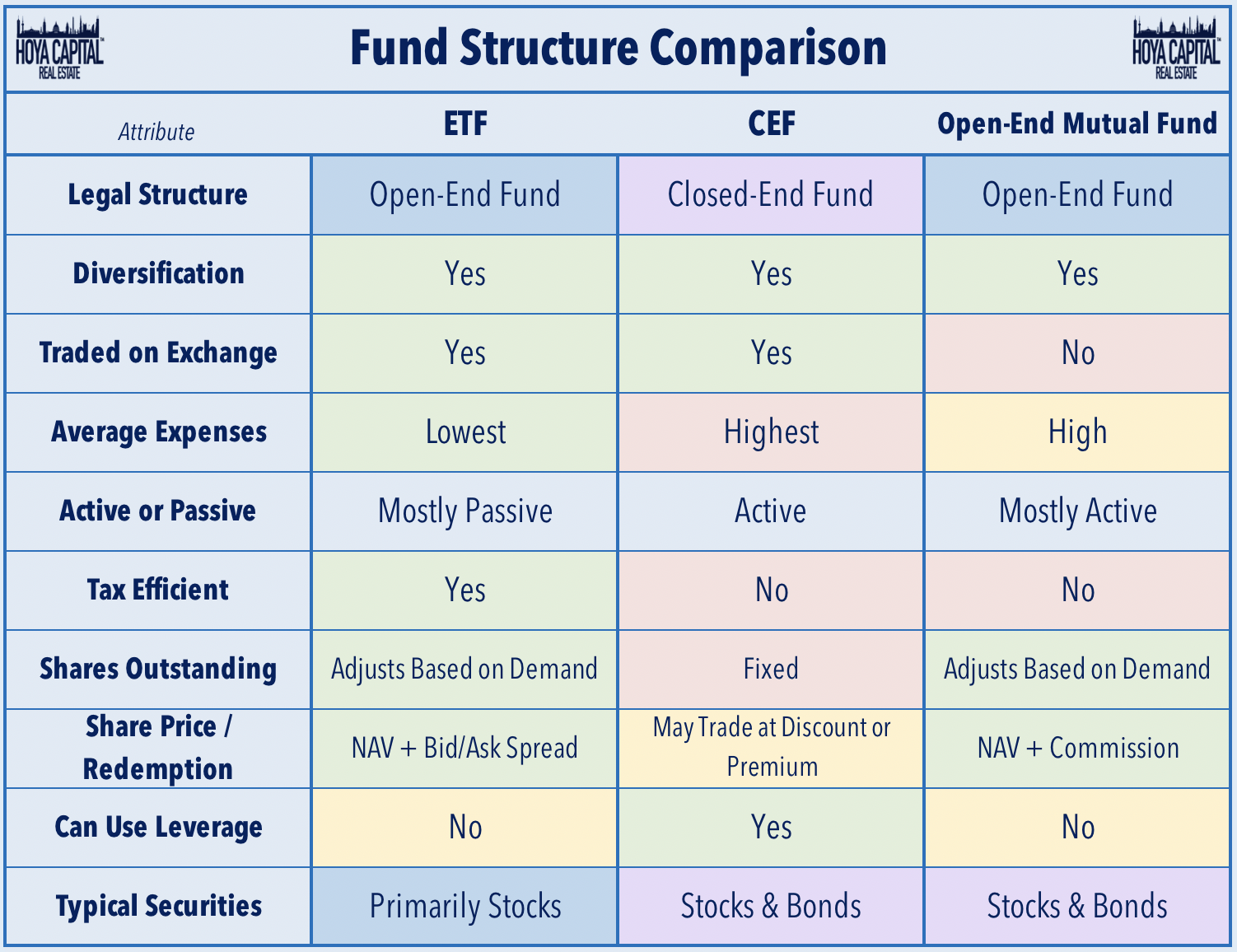
Real Estate Cefs Satisfying A High Yield Fix Seeking Alpha
What Is The Difference Between Closed And Open Ended Funds Quora

Investing In Closed End Funds Nuveen
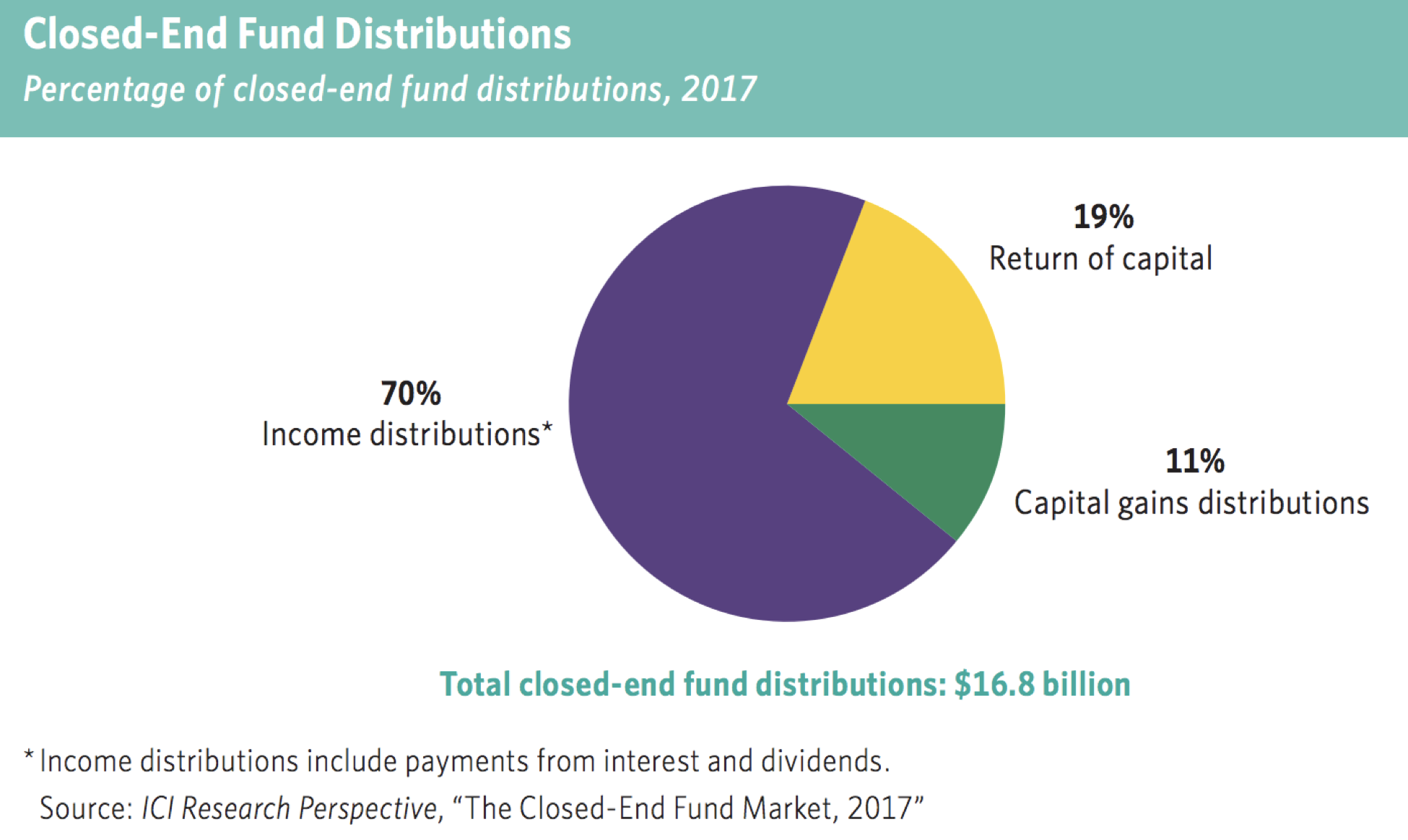
A Guide To Investing In Closed End Funds Cefs Intelligent Income By Simply Safe Dividends
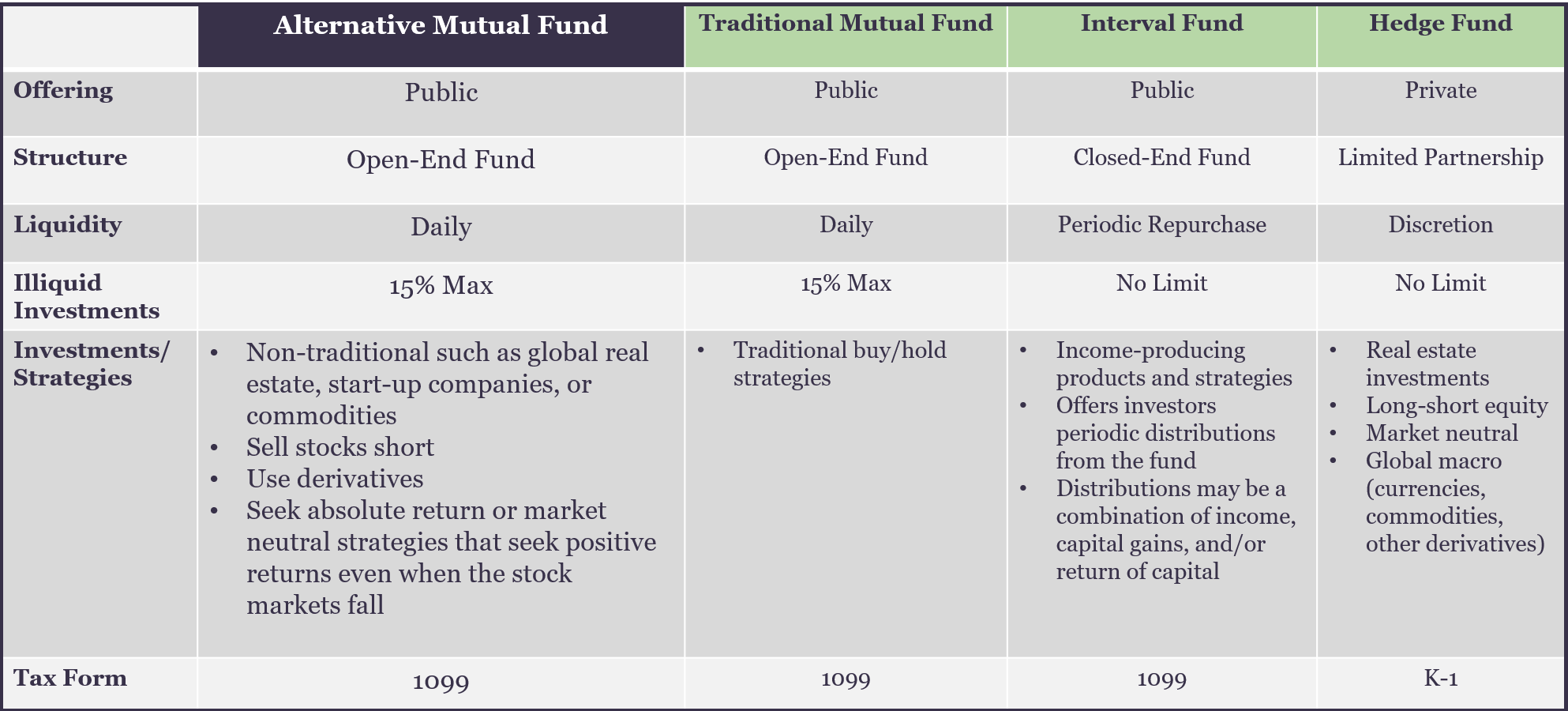
Alternative Mutual Fund Liquidity Spectrum Investment Comparison
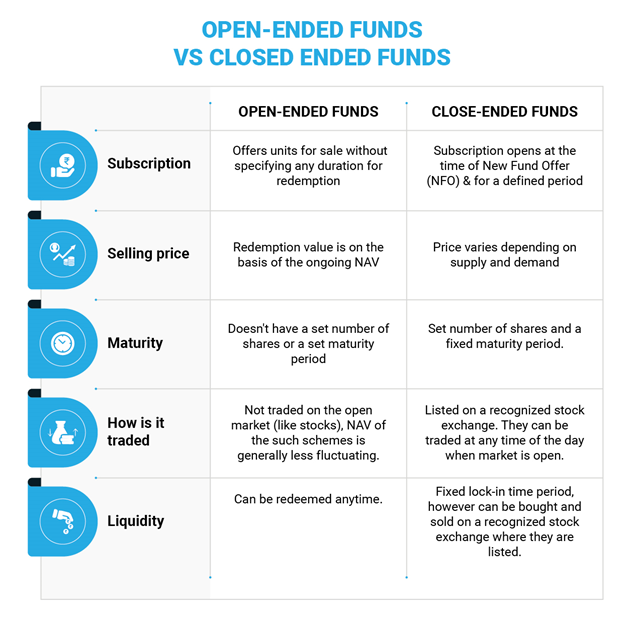
Closed Vs Open Ended Funds Which One Do I Pick Mutual Funds Etfs Trading Q A By Zerodha All Your Queries On Trading And Markets Answered

A Guide To Investing In Closed End Funds Cefs Intelligent Income By Simply Safe Dividends

Open Ended Mutual Fund Vs Close Ended Mutual Fund What To Prefer
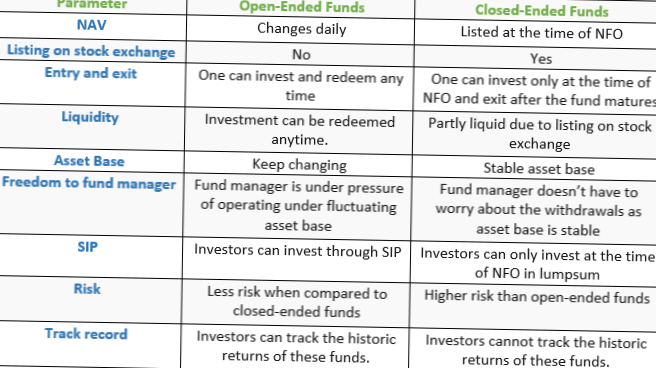
Difference Between Open Ended And Closed Ended Mutual Funds Differbetween

The Problem With Open Ended Life Settlement Funds Articles Advisor Perspectives

